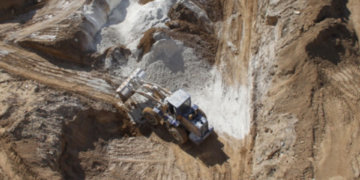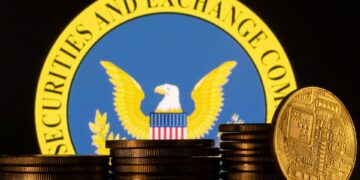By Matt Grossman
The Federal Reserve should do more to show the public how it is thinking about the economy, former Fed Chair Ben Bernanke said.
In a paper published Friday, Bernanke suggested that the central bank post a quarterly report giving its assessment of the economy and a forecast of how it will evolve. The document would give a clearer understanding of how the Fed is making decisions and what to expect going forward, Bernanke said.
Over decades, the Fed has gradually moved toward more transparency, a departure from the days when longtime Fed chair Alan Greenspan cultivated an air of mystery around how the central bank was steering the economy. That trend sped up under Bernanke’s tenure as Fed chair between 2006 and 2014, including with the introduction of the Fed’s official 2% inflation target and Bernanke’s regular press conferences.
On Friday, Bernanke suggested the Fed should go further yet by adding the economic report to its regular publications. Chair Jerome Powell and other Fed officials heard Bernanke outline his proposal at a Washington, D.C., research conference as part of the central bank’s regular five-year review of how it operates.
Adding the new document would put the Fed in line with other big central banks, Bernanke said.
“We wouldn’t have to invent these things from scratch,” Bernanke said.
Today’s Fed already shares its economic views through its policymakers’ speeches and press conferences, including Powell’s media briefings after each interest-rate decision. Several times a year, the Fed also posts a “dot plot” that shows anonymously how each Fed official expects inflation, unemployment, economic growth and interest rates to evolve in the years ahead.
Those tools are useful but aren’t clear enough on their own, Bernanke said. He argued that a comprehensive economic-outlook report would give the public a firmer understanding of the Fed’s policy planning and its assumptions.
In particular, an economic report could help the Fed communicate with more nuance about how it would respond in different scenarios, Bernanke said. For example, as inflation was heating up during 2021, the report would have given the Fed a place to explain how it would respond if inflation continued to accelerate. That could have given the public more advance notice of the steep interest-rate increases that followed in 2022.
Bernanke suggested that the report be prepared by the staff economists of the Fed’s Washington-based board of governors, with input from policymakers.
Bernanke’s paper was one of six that Fed officials were expected to consider over the two-day conference. Previous sessions covered topics ranging from how the Fed should judge the strength of the labor market to how it should think about the inflation that consumers and investors expect in the future.
Powell has indicated the five-year review is likely to walk back changes from the last such review, in 2020, when the central bank decided to let inflation catch up to trend by allowing it to run above target. Critics have argued that the decision helped set the stage for the steep inflation that followed in the early 2020s.
The Fed expects to wrap up the framework review in August or September.
Write to Matt Grossman at [email protected]
(END) Dow Jones Newswires
05-16-25 1057ET
















